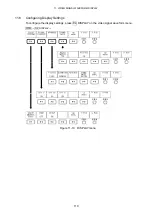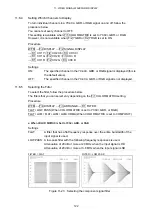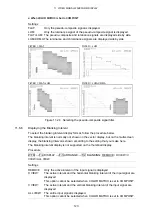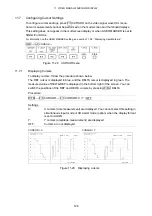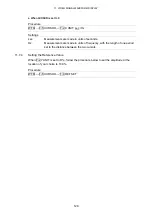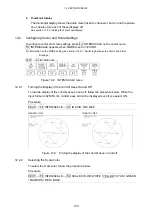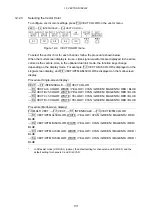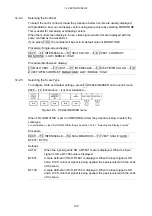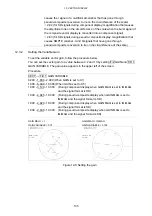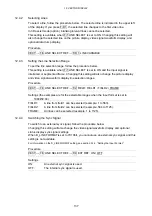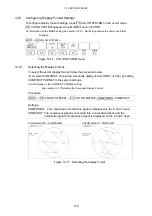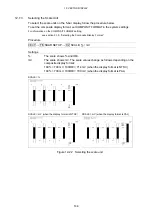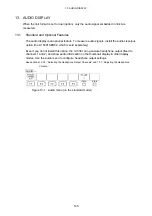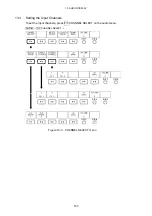
12. VECTOR DISPLAY
132
12.2.4
Selecting the Contrast
To select the vector contrast, follow the procedure below. Vectors are usually displayed
with gradations, but you can display vectors using single colors by selecting MONOTONE.
This is useful for comparing overlapping vectors.
When the multi-screen display is in use, video signal waveforms are displayed with the
same contrast as the waveforms.
If you press F•D 2, the contrast will be set to its default value of MONOTONE.
Procedure (Single-screen display)
VECT
→
F•1 INTEN/SCALE
→
F•3 VECT COLOR
→
F•D 2 VECT CONTRAST:
MONOTONE / LOW / MIDDLE / HIGH
Procedure (Multi-screen display)
F•3 MULTI VECT
→
F•1 VECT
→
F•1 INTEN/SCALE
→
F•3 VECT/WFM COLOR
→
F•D
2 VECT/WFM CONTRAST: MONOTONE / LOW / MIDDLE / HIGH
12.2.5
Selecting the Scale Type
To configure scale and marker settings, press F•4 SCALE/MARKER on the vector menu.
VECT
→
F•1 INTEN/SCALE
→
F•4 SCALE/MARKER
→
Figure 12-5 SCALE/MARKER menu
When COLOR MATRIX is set to COMPONEN, follow the procedure below to select the
scale type.
For information on the COLOR MATRIX setting, see section 12.6.1, “Selecting the Display Format.”
Procedure
VECT
→
F•1 INTEN/SCALE
→
F•4 SCALE/MARKER
→
F•1 VECT SCALE: AUTO /
BT.601 / BT.709
Settings
AUTO:
When the input signal is SD, a BT.601 scale is displayed. When the input
signal is HD, a BT.709 scale is displayed.
BT.601:
A scale defined in ITU-R BT.601 is displayed. When the input signal is SD
and a 100 % color bar signal is being applied, the peak levels match the ends
of the scale.
BT.709:
A scale defined in ITU-R BT.709 is displayed. When the input signal is HD
and a 100 % color bar signal is being applied, the peak levels match the ends
of the scale.


